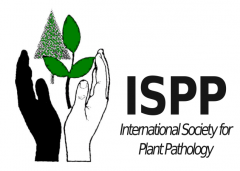CRISPR/CAS9 GENOME EDITING TECHNOLOGY IS A PLANT BREEDING DREAM COMES TRUE
A. Gal-On
doi: 10.4454/jpp.v98i4sup.3774
Abstract:
Crop improvement depends on genetic variation within a population. This variation based on mutations in the ge- nome’s DNA occurring during evolution. The genetic variation can be increased by random mutation of the DNA, by mutagenic chemicals or radiation physical treatment. Such artificial mutagenesis (EMS/radiation) have been widely used in conventional plant breeding for decades as deregulated food products. In contrast to random mutations, genome editing technologies allow specific changes in a DNA target gene. In genome editing exogenous nucleases break the DNA within the nucleotide sequence target site and an endogenous DNA repair mechanism ligates the DNA ends by nonhomologous end joining leading to nucleotide changes at the break site (gene knockout). In the last decade different nucleases (ZPN, TALEN and meganucleases) has been used with very limited success. Recently, a new biotechnology system called the CRISPR/Cas9 has been developed for genome editing. The technology based on deciphering of a bacterial immune system in which RNA transcribed from clustered, regularly interspaced, short palindromic repeats (CRISPR) of bacte- rial genomes associated with nucleases to cut bacteriophage DNA and prevent virus infection. In current practice the DNA genome of different organisms is targeted by the Cas9 nuclease from Streptococcus pyogenes, in association with a synthetic guide RNA, that induces sequence-specific genomic DNA double-strand breaks. This technological revolution is highly efficient, simple and allows DNA editing in all organisms tested to date. The technology has been demonstrated in dicotyledonous and moncotyledonous whole plants and protoplasts. Additionally, genome editing can occur without a transgene remaining in the plant, so that edited plants are equivalent to non-transgenic mutants. Thus, the CRISPR-Cas9 is a promising technology that can modify genes without rendering corresponding plants as classical Genetic Modified Organism (GMO), paving the way to its implementation in agricultural biotechnology. We have utilized this technology to develop novel crops with improved stress-resistance. These include climate-tolerant tomato and virus-resistant cucumber cultivars. We believe that this novel technology has the potential for expediting development of disease resistance in many crops without the need for extensive backcrossing and genetic manipulation with wild sources of resistance.




